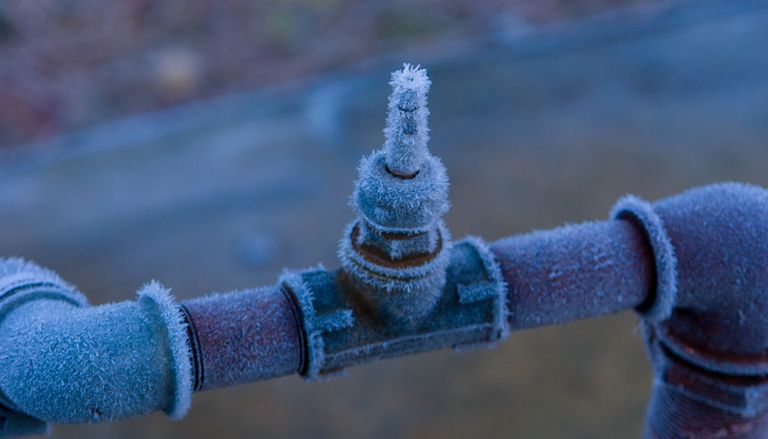This great article directly below on the subject of 6 Ways to Prevent Frozen Pipes is really compelling. Read it yourself and decide what you think about it.

Cold weather can wreak havoc on your pipes, especially by freezing pipes. Here's just how to avoid it from occurring and what to do if it does.
Introduction
As temperature levels decrease, the threat of icy pipes rises, potentially leading to pricey repair work and water damages. Comprehending just how to avoid icy pipes is critical for house owners in cool climates.
Avoidance Tips
Insulating prone pipelines
Wrap pipelines in insulation sleeves or use warm tape to safeguard them from freezing temperatures. Concentrate on pipelines in unheated or external locations of the home.
Home heating methods
Maintain indoor areas appropriately heated up, especially locations with pipes. Open closet doors to allow cozy air to circulate around pipes under sinks.
Just how to determine icy pipelines
Search for decreased water circulation from faucets, uncommon smells or sounds from pipelines, and visible frost on subjected pipelines.
Long-Term Solutions
Architectural modifications
Think about rerouting pipelines far from exterior wall surfaces or unheated areas. Include extra insulation to attic rooms, basements, and crawl spaces.
Updating insulation
Invest in top quality insulation for pipelines, attics, and wall surfaces. Proper insulation assists keep constant temperature levels and reduces the danger of icy pipes.
Securing Outdoor Plumbing
Yard tubes and outside taps
Separate and drain garden pipes prior to winter. Install frost-proof spigots or cover outside taps with shielded caps.
Understanding Frozen Pipes
What triggers pipes to freeze?
Pipes freeze when subjected to temperature levels listed below 32 ° F (0 ° C) for prolonged durations. As water inside the pipes freezes, it increases, taxing the pipeline wall surfaces and potentially triggering them to burst.
Risks and damages
Icy pipelines can cause water disturbances, building damages, and costly repair work. Burst pipelines can flood homes and cause substantial structural damages.
Indications of Frozen Pipeline
Recognizing icy pipes early can stop them from bursting.
What to Do If Your Pipelines Freeze
Immediate actions to take
If you believe frozen pipelines, keep faucets available to relieve pressure as the ice thaws. Utilize a hairdryer or towels taken in hot water to thaw pipes slowly.
Final thought
Stopping frozen pipelines requires aggressive procedures and quick actions. By comprehending the reasons, indications, and preventive measures, home owners can safeguard their pipes during winter.
5 Ways to Prevent Frozen Pipes
Drain Outdoor Faucets and Disconnect Hoses
First, close the shut-off valve that controls the flow of water in the pipe to your outdoor faucet. Then, head outside to disconnect and drain your hose and open the outdoor faucet to allow the water to completely drain out of the line. Turn off the faucet when done. Finally, head back to the shut-off valve and drain the remaining water inside the pipe into a bucket or container. Additionally, if you have a home irrigation system, you should consider hiring an expert to clear the system of water each year.
Insulate Pipes
One of the best and most cost-effective methods for preventing frozen water pipes is to wrap your pipes with insulation. This is especially important for areas in your home that aren’t exposed to heat, such as an attic. We suggest using foam sleeves, which can typically be found at your local hardware store.
Keep Heat Running at 65
Your pipes are located inside your walls, and the temperature there is much colder than the rest of the house. To prevent your pipes from freezing, The Insurance Information Institute suggests that you keep your home heated to at least 65 degrees, even when traveling. You may want to invest in smart devices that can keep an eye on the temperature in your home while you’re away.
Leave Water Dripping
Moving water — even a small trickle — can prevent ice from forming inside your pipes. When freezing temps are imminent, start a drip of water from all faucets that serve exposed pipes. Leaving a few faucets running will also help relieve pressure inside the pipes and help prevent a rupture if the water inside freezes.
Open Cupboard Doors
Warm your kitchen and bathroom pipes by opening cupboards and vanities. You should also leave your interior doors ajar to help warm air circulate evenly throughout your home.

Hopefully you liked our article on Helpful Tips to Prevent Frozen Pipes this Winter. Thank you for taking a few minutes to browse our blog post. Those who liked our blog post please be sure to share it. I am grateful for being here. Revisit us soon.
Maintenance Sign-Up